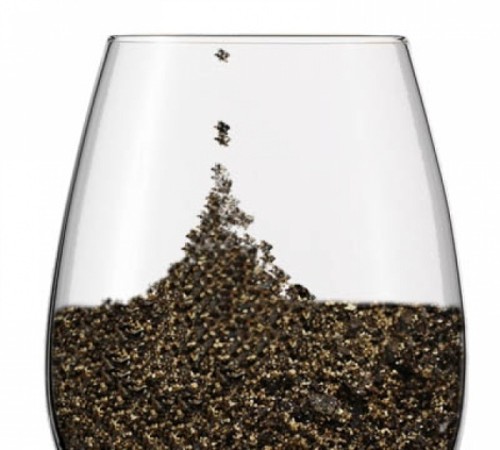Tackling the topic of what makes a great wine great is a little like
discussing modern art or music: You might not be able to explain it, but you know what you like. And wine tasting is nothing if not a subjective sport. I’ve said it before: When it comes to wine, don’t let anyone—me included—tell you what to like. Whether it’s white Zinfandel, first-growth Bordeaux or Mountain Dew, you should drink whatever pleases you. I do.
However, there are some characteristics that all great wines have in common. And it’s helpful if you know them, particularly if you enjoy wine enough to take how it’s made seriously. Knowing some common features of good and great wine can lead to a lifetime of wine-drinking pleasure. Or, you can just randomly pick bottles off the wine-store shelf and hope to get lucky.
First, most wine made today is pretty darned good. Modern winemaking practices and technologies mean that the chances of running into really lousy wine are minimal. But, as I said, there is good wine and then there is great wine.
One thing all great wine has in common is that it originates with great grapes. What I mean is that the cornerstone of all superb wine is mature, ripe fruit. They are invariably made using low-yield viticulture practices with fruit that is ripe and ready. Unripe fruit makes for nasty wines. So, knowing something about various different winemakers and how they treat their grapes can tell you a lot about what’s going to wind up in the bottle.
While it may be a little tricky to get a handle on, all great wines are expressive of a particular place—what the French call terroir. Distinct soils and microclimates can actually be tasted in good wine. The first time this really hit me was when I tasted an Australian Shiraz that was brimming with eucalyptus flavors. When I mentioned this to the guy who imported the wine, he told me that the particular vineyard where this Shiraz came from was surrounded by eucalyptus trees, which imparted those unique flavors to the grapes. That’s terroir.
The ability to age and evolve is another hallmark of great wine, especially reds. Many good wines are ready to drink upon release. Great wines usually benefit from cellaring for years and even decades. They improve over time, whereas when the wine is young, it is often one-dimensional and uninteresting. Complexity and nuance develop with time.
Great wines are well-balanced, just like great foods prepared by talented chefs. Out-of-balance wines may be too tannic, too sweet, too acidic, too fruity, too oaky, too heavy, etc. But a great wine is one that is harmonious, where texture, flavors, aromas, intensity and body (the way the wine feels in your mouth) all come together in a glorious symphony where the wine becomes more than just a sum of its parts.
The “it” factor: What I
usually tell wine drinkers—
especially those without a lot of wine knowledge or tasting experience—is that you will know a great wine when you encounter it. There is something slightly indefinable about truly great wines—a uniqueness and, for lack of a better term, quality that just can’t be denied. You might not be able to explain it, but you’ll know when you taste it. It’s a voila moment.
Thankfully, great wines don’t have to have a great price. Excellent, flawlessly made wines can be had for $30 or less from producers such as Bucklin, Charles Krug, Hall, Ramey and Beringer, just to name a handful. The fun is in finding the great stuff on your own.
Speaking of...
-
Jazz @ Vanina
Zesty Lunch, V-Day in Paris, Shallow Shaft + Epic
- Jan 21, 2014
-
Favorite Wines Of 2013
Can't-miss grapes from the past year
- Dec 24, 2013
-
Vegan Recommends
Celebrate Vegan Month of Food
- Sep 17, 2013
- More »
More by Ted Scheffler
-
Flavor on the Western Front
Nomad Eatery ups the ante for off-airport eats.
- Dec 13, 2017
-
Under the Christmas Tree
Holiday gifts for cooks, foodies and winos
- Dec 6, 2017
-
Spreading the Love
Amour Café creates simple yet scrumptious fare.
- Nov 29, 2017
- More »





